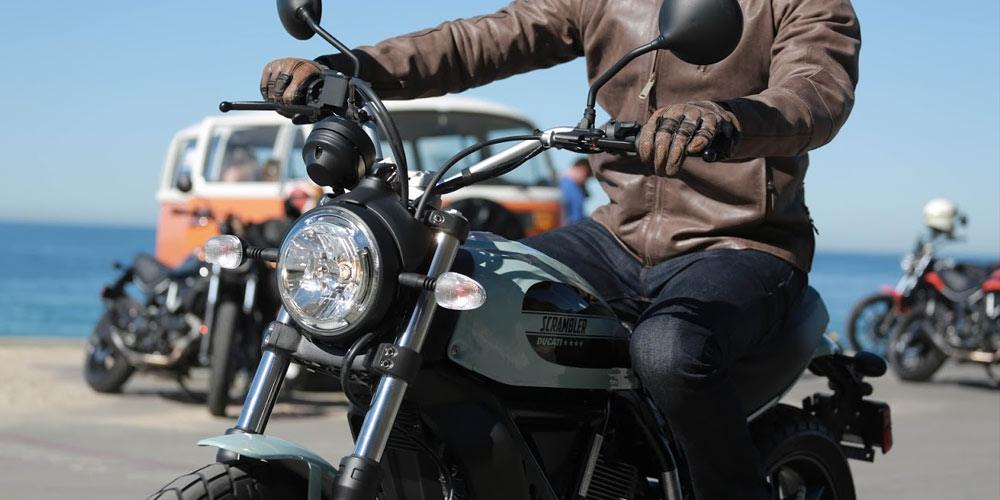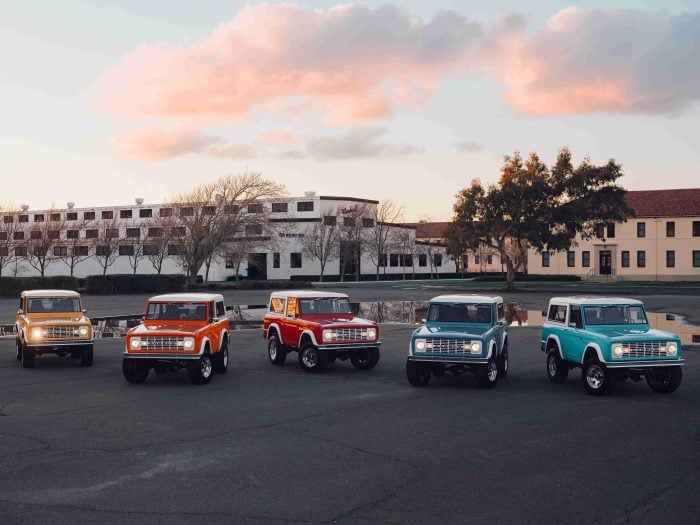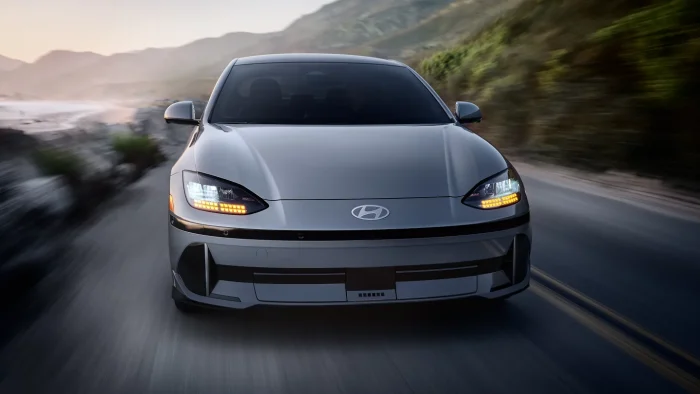Well, well, well… you’ve come to the realization that four wheels aren’t better than two, and that nothing can replace the feeling of your knees in the breeze, the sun on your face, and the wind in your hair. You want a motorcycle, and God damn it, you want one now! But wait—you don’t know the first thing about them. What motorcycle should you buy? How do you get your license? Should you draft your living will? Whoa whoa whoa—slow down there, Evel Knievel. You need a guide, and luckily for you, we’re a group of two-wheeled swamis. Let us show you the way:
How Do I Get A License?
It doesn’t take much to get a motorcycle license in most states. In fact, in Alabama, you don’t even need a motorcycle endorsement at all. But for most states, one must pass a written test (which is based on a small and easy-to-remember pamphlet), hold a permit for a certain amount of time (usually two weeks), and then come back to take a physical motor test. Most people—new riders, especially—opt out of taking the test on an actual motorcycle, instead finding someone to rent them a scooter.
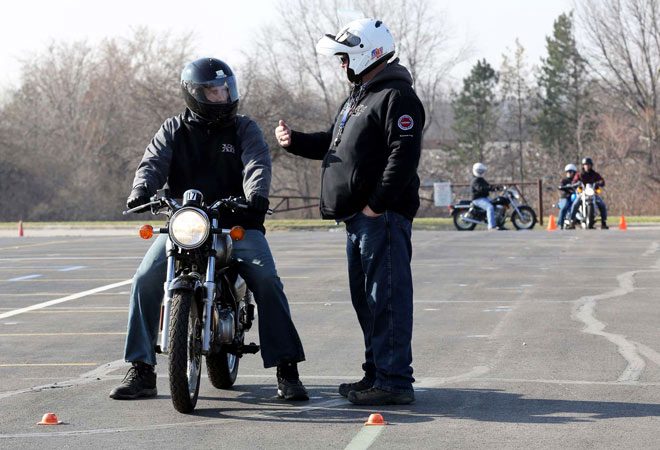
What About a Certified Rider Course?
If you take a certified motorcycle rider safety course, you typically receive your license at the end of the course. No permit nonsense, no scooter rental, nothing—just take the two-day course, and if you don’t crash and burn, you leave with a license. And if you do crash and burn, then, well, it probably wasn’t meant to be. Plus, not for nothing, but there’s a ton of really valuable information shared in the rider courses about things like gyroscopic force, center of gravity, and the sheer physics of motorcycling—there’s a lot more to learn than clutch, gas, and brakes.
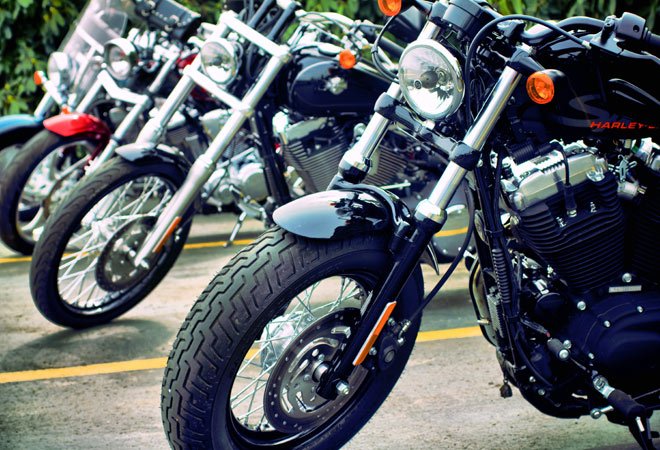
What Kind of Bike Should I Get?
At first glance, this point may sound a little silly. But in reality, the process of purchasing your first motorcycle should be something that you let marinade for a little bit. What kind of riding are you looking to do? Are you trying to carve twisties up in the mountains, or are you looking for more of a long haul kind of rig? Do you want something you can customize to your liking and even learn minor fabricating skills on, or are you looking strictly to giddy up and go whenever you want? Are you looking for fuel economy? Safety? Do you really only care about being the mysterious guy at the bar with the helmet? What kind of friends will you be riding with? Do you want a chopper? A cruiser? A sport bike? An Enduro? Japanese? British? German? American?
These are all questions you need to ask yourself, and they all primarily come down to personal preference. If you’re the “camping in the woods and jamming 250-300 miles a day” kind of rider, then get yourself a cruiser or a dual sport with a sissy bar or bags, and give yourself plenty of room to pack up your gear and roll. If you’re interested in twisties and don’t really care about long distance comfort, then a sport bike may be your pick. It all depends on you.
Should I Buy New or Used?
The debate over buying new and used usually comes after a contemplation of the following things: rider experience, budget, mechanical acumen, reliability, and customizability.
First of all, if you’re a new rider, we cannot stress this enough: Do not buy a brand new bike as your first bike. Buy something old and mechanically sound, and focus more on learning how to roll than on looking cool at the bar or on the slab. We don’t really get too anecdotal here, but allow me to break character for one second:
I (the author of this guide) have been riding motorcycles of all shapes, sizes, and national origins for over a decade. The night of my first motorcycle accident (there have been a few), one of the good men who patiently taught me how to not be an idiot on two wheels also taught me a very valuable lesson and fact of life about being a motorcyclist: It’s not about if you’re going to go down, it’s about when. If I were a new rider, I’d much rather take the risk of having to beat up on—and repair—an old junker until I got my bearings about me. Buy something cheap and safe, ride it around for a season or two until you get a few thousand miles under your belt, and then upgrade to something cooler/quicker/fancier. That’s just my advice.
Okay, back into Cool Material writer mode:
If you’re the kind of person who can’t turn a wrench and doesn’t really want to learn how (don’t feel bad about this—there are plenty of riders out there who’d rather spend their time riding than wrenching), then head on out to the dealer and get yourself a brand-spanking-new whatever you want. If you can’t afford a trip to the dealership but still want to spend as little time wrenching as possible, then buy something newer, but used, with as little mileage as possible. The older overhead cam Japanese bikes—the Yamaha XJ650s, Honda CB750s, etc.—can be had very cheap with a little luck and patience, and are thought to be damn near bulletproof. They don’t take a lot of heavy maintenance to keep riding, but will have you rolling up your sleeves and getting your hands dirty from time to time.
But if you’re one of those people who enjoys tinkering, learning new skills, and making things your own, then don’t be afraid to dive in to something a little older. Old bikes have their own gritty charm, and even if they take a lot of labor to keep on the road and in reliable mechanical condition, that labor is usually one of love. If you have the tools, the time, and the mechanical prowess, definitely make it happen!

What Should I Look for When Purchasing a Used Motorcycle?
Buying a used motorcycle can be a pretty hairy ordeal, especially if you’re not quite sure what to look for. The first thing you should look for is a friend who knows what to look for (har har!). If you can’t, then here’s a small checklist:
- First of all, make sure the bike you’re starting is absolutely cold. Tell the owner of the bike that you’d like to test it from a cold start, in order to get a real feel for the kind of conditions. Shot out piston rings, electrical issues, valve train noises—all of these things can be difficult to spot on a bike that has already been warmed up. To test this, when you arrive, go to the top of the cylinder head and make sure the header pipe is cool to the touch. If you can’t grab it, or feel unnatural warmth in the area, then that’s a solid red flag, and you should probably walk away.
- Start with a visual inspection of the bike. Look for oil seeping out from between the rocker covers (those things on the very top of the cylinder heads) and the cylinder head jugs (those vented, finned things right below the rockers). In fact, look for oil or fluid leaks, or slick spots anywhere on the bike, because at some point or another, you’re probably going to have to fix it.
- Start the motorcycle, and play close attention to what’s coming out of the tailpipe.
- If there’s a significant amount of blue or grey-ish smoke, either be prepared to dig into the top end of that motor and do a piston ring job at some point, or walk away. That hue of smoke means motor oil is somehow getting into the combustion chamber and being burnt up and pushed out through the exhaust pipe. Not good.
- If there’s white-ish smoke on startup (but it disappears), that’s probably totally fine—it means there was either a tiny bit of moisture in the exhaust system that’s burning off, or the bike’s carburetor is running a little rich. If you want to know if it’s the air/fuel mixture simply put your nose up to the exhaust pipe and smell. If you smell unburnt fuel, then it’s most likely a rich mixture, which is no biggie. But if this bike uses coolant (the majority of motorcycles on the road are air-cooled and don’t have radiators) and smells like anything else, then it means coolant is somehow being burnt, and that can be anything from a blown head gasket to a cracked block. And that can be a huge bummer.
- Ideally, on startup, you don’t want to see any smoke. You want to be able to put your hand up to the exhaust pipe and feel a steady and consistent push of air from the compression stroke of the motor. A faint compression stroke may mean nothing, but it does indicate that there’re lower compression pistons in there (again, no big deal, unless the bike you’re looking at specifically advertises higher compression pistons).
- Upon start up, also keep your ears trained onto the motor.
- Listen for any funny noises on the bottom or top end that might be indicative that something is wrong. It’s really difficult to diagnose any kind of problems this way, as the cylinder heads on a motorcycle are very thin, and moving metal parts tend to “clink” and “clank” around every once in a while. If you hear slight tickling and tiny metallic “clinking” at startup, don’t be distraught. Valve trains are expected to be a little noisy from time to time.
- Listen to the exhaust. It should be fairly consistent, and not sound too labored.
- Truthfully, trust your instincts, but don’t allow yourself to get paranoid. Believe it or not, if something is busted on a bike, it usually has a fairly obvious way of letting you know. If little noises or idle spots seem reasonable, they most likely are.
- Also, make sure that when the choke is off (after the bike has warmed up a bit), make sure it’s not idling too high. If a bike won’t hold a steady idle at normal RPMs (between 750 and 1,1000 RPMs, mostly), then the owner may be trying to cover something up. Be careful about this.
- If you want to be super thorough, you can check these things:
- Drain the oil, and check for any massive chunks of metal. There’s an acceptable amount of metal particle that’s acceptable for an oil change (moving parts do wear down over time, and that’s why it’s important to keep a clean oil filter and change your oil regularly), but if there are any huge chunks or anything bigger than a big grain of sand, proceed with caution or walk away.
- After you’ve test ridden it, pull each of the spark plugs. At this point in the buying phase, you don’t really have to focus on whether it’s running lean or rich, but you should be looking for oil. If there is oil coating the plug tip or an excessive amount on the spark plug, it means that you’re probably on the tail-end of a head gasket, which means you’ll be getting your hands dirty sometime very soon. AKA, in most cases, walk away.
- Take it for a test ride:
- Inspect the tires, blinkers, horn, lights, chain/belt, and anything else. Make sure there are no major cracks in the tires, that the belt/chain is properly lubed and shows no signs of dangerous wear, and all the bells and whistles operate as expected. If all is well, take it for a ride.
- Test the brakes and make sure they’re working properly.
- If the bike is warmed up (it should be, by this point), take it higher into the RPM range in one of the gears and listen for any loud “pinging,” weird metallic scraping, or any serious noises that jump out at you.
- Wind through all of the gears, one at a time, and make sure they all shift smoothly and without hesitance. If the bike pops out of gear at any point, or grinds into certain gears, it could potentially mean trouble for you in the future.
- When you get up to speed, try to feel for any wobbles or unnatural shuddering—including in the wheels, the front end, and in the frame (the motor).
- While at speed and on an even surface (and in a safe area), let go of the handle bars and see what happens. If the bike’s front end starts to shake or wobble, or if the bike doesn’t track straight, there may be a significant issue here. Proceed with caution.
- After the test ride, take it back and give it a once over:
- Make sure none of the foot pegs are out of alignment, the handlebars are perfectly straight and symmetrical with your shoulder line, and that there are no visible signs that the bike was dropped or in an accident.
If the bike passes these tests, then you should feel pretty comfortable in exchanging cash and locking it up. At this point, anything wrong with the bike can probably be fixed and is no big deal.
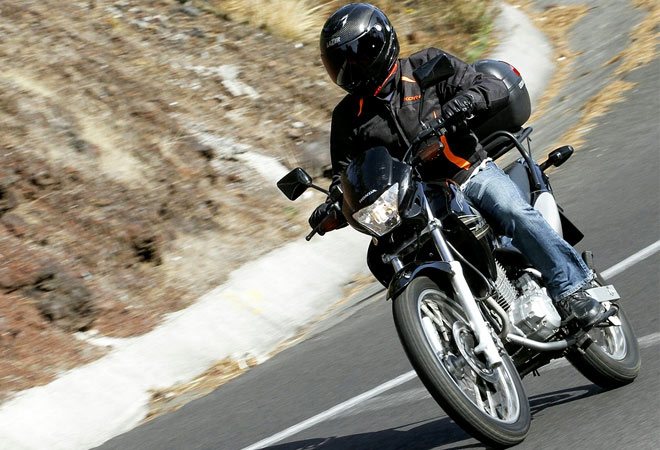
But What if I Crash?
Here’s the biggest “What if?” about deciding to ride a motorcycle. There’s no real easy way to say it, but the fact is that you can be the most talented, skilled, and self-aware rider in the history of riders, and you’re still never totally safe. Motorcycles are inherently dangerous machines, and it’s not a lifestyle for everyone. But those of us who get it, well, get it. And those of us who don’t, usually wind up picking themselves up off the pavement, selling off the wreck, and going back to gaming or whatever normies do.
Walk into this journey knowing that the odds of you walking away from it completely unscathed are rare, and weigh that fact against the possibility of experiencing the kind of freedom and independence that most people live out their days dreaming about. If it’s worth it, you’ll stay. If it’s not, you’ll leave.
The only advice we’ll offer about crashing is this: Dress for the slide, not the ride. Be as cautious and ride as safely as you can, but always dress for the worst. It can happen to anyone at any time.

